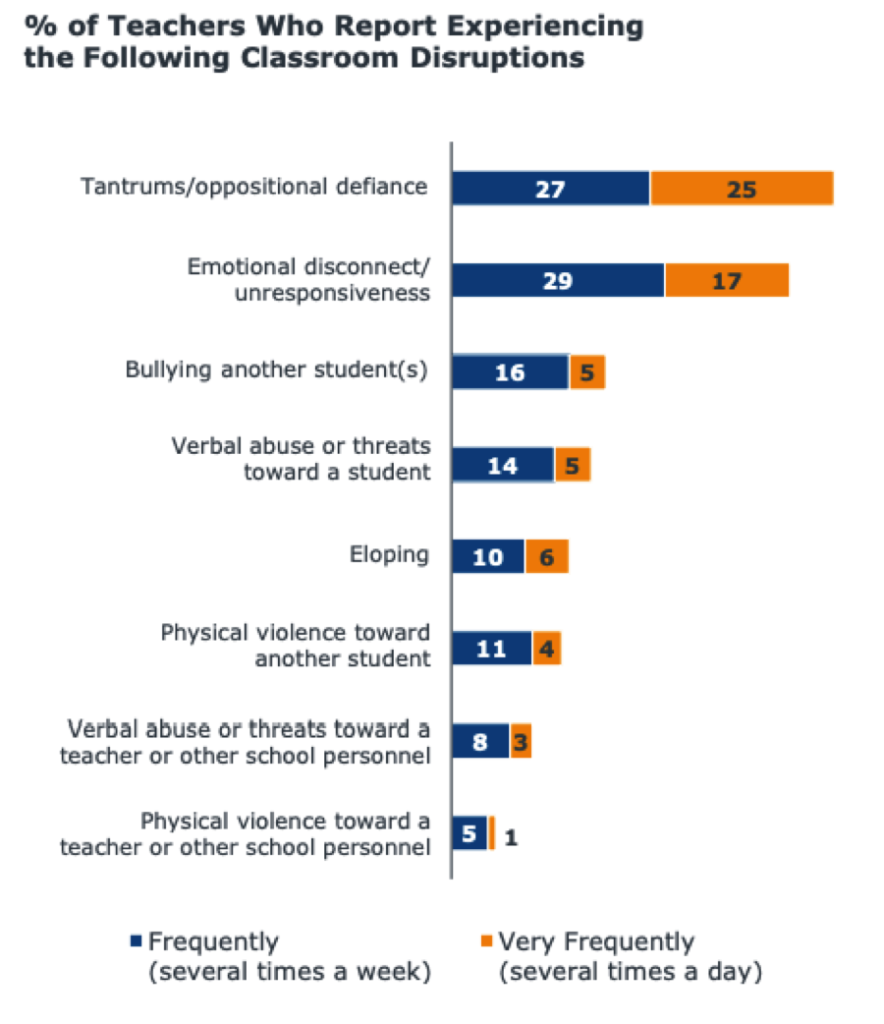Teachers report increase in student behavioral issues

After hearing from numerous teachers, and my own experience as one, it is clear there are many burdens placed on today’s educators. We ask a lot of our teachers, and many don’t feel as supported as they would like to when it comes to handling student behavior.
A survey conducted by EAB of nearly 1,900 elementary school teachers, administrators and staff from 41 public school districts across the country reveals the vast majority of educators perceive an alarming increase in behavioral disruptions in elementary school classrooms over the past three years, according to Globe Newswire. The trend is particularly alarming to teachers, who report feeling unprepared and poorly supported to manage the disruptions.
“Students and teachers deserve a positive classroom environment that is conducive to learning, yet more than 70 percent of elementary school teachers in our survey told us they have seen a recent increase in disruptive behavior in their classrooms,” said Pete Talbot, EAB’s managing director of strategic research and lead researcher on the white paper, “Breaking Bad Behavior: The Rise of Classroom Disruptions in Early Grades and How Districts Are Responding…”

Administrators attributed the surge in bad behavior to trauma in the family and untreated mental health conditions, whereas teachers were more likely to point to modern-day changes in parenting and overexposure to electronic devices.
Tantrums, defiance, and emotional disconnect were the most frequent classroom disruptions, with about half of teachers saying they experience these behaviors at least several times a week and even several times a day. About one-fifth of teachers said bullying other students occurred frequently or very frequently.
The intensity and frequency of poor behavior costs lost instructional time, the survey revealed. Teachers estimated losing “nearly two and a half hours of learning time each week to behavioral disruptions,” adding up to “almost three weeks of lost instructional time” over a school year.
To help manage student behavior, school districts can use the survey as a “playbook” to share 15 best practices with their teachers. Teachers can’t control their students’ behavior (it’s up to each individual to control his or her own behavior), but they can help students take ownership of their behavior in a positive way with proper support and guidance from district leadership.
Teachers, you are resilient, and you are not alone. Join us at EducatedTeachersMN.com as we empower and inform educators across the state.